Leonardo di ser Piero da Vinci (1452 – 1519) is now regarded as the prime example of the “Universal Genius” due to his accomplishments in a wide variety of fields including science, engineering, mathematics, anatomy and botany. However for four centuries after his death his fame rested primarily on his laurels as a painter. His detailed knowledge of anatomy, light, botany and geology helped him in creating some of the most renowned masterpieces in history. Da Vinci is known for capturing subtle expressions due to which his paintings look more alive than others. He made numerous contributions to the field of art including his pioneering of the techniques known as sfumato, the smooth transition from light to shadow; and chiaroscuro, use of strong contrasts between light and dark to achieve a three dimensional effect. Here are the 10 most famous paintings created by Leonardo Da Vinci.
#10 Salvator Mundi
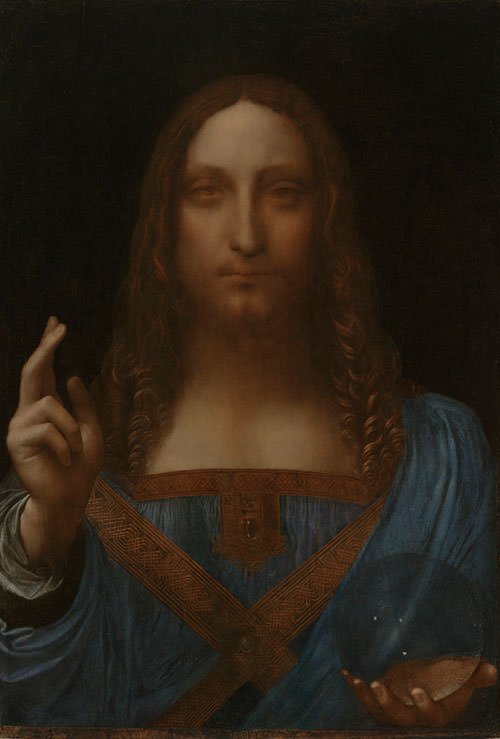
| English Title | Savior of the World |
| Location: | Louvre Abu Dhabi, U.A.E. |
| Year: | 1500 |
The first documented owner of this painting was King Charles I of England. It was auctioned by the Duke of Buckingham’s son in 1763 and acquired in 1900 by British art collector Sir Francis Cook, whose descendants sold it at an auction for merely £45. It was only in the first decade of the twenty first century that the artwork was restored and recognized as a work of Leonardo da Vinci, thus giving it widespread attention. Salvator Mundi depicts Jesus Christ as Salvator Mundi (Savior of the World). It shows him in Renaissance clothing while giving a benediction with his raised right hand, and his left hand holding a crystal sphere.
#9 Ginevra de’ Benci
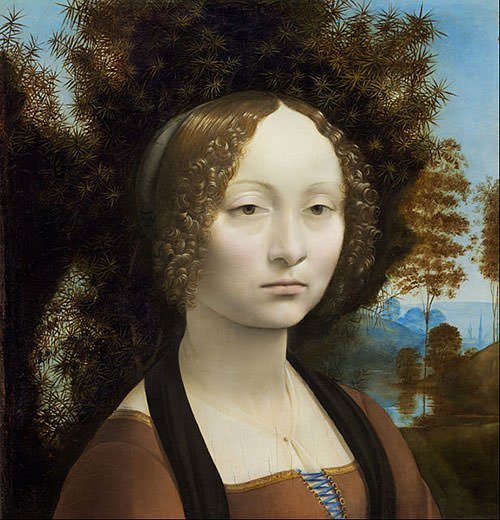
| Location: | National Gallery of Art, Washington, D.C., U.S. |
| Year: | 1478 |
This is one of only four paintings of women by Da Vinci, the others being the Mona Lisa, Lady with an Ermine and La belle ferronnière. The portrait was probably created to commemorate the marriage of the 15th-century Florentine aristocrat Ginevra de’ Benci to Luigi di Bernardo Niccolini. It is admired by many for its portrayal of Ginevra’s temperament. She looks beautiful, but austere with no hint of a smile, her gaze, although forward, seems indifferent to the viewer. Directly behind the model in the portrait is a juniper tree. This is an intended a pun on her name as Italian for juniper is ginepro. Portrait of Ginevra de’ Benci is considered an influential work in portrait painting.
#8 The Adoration of the Magi
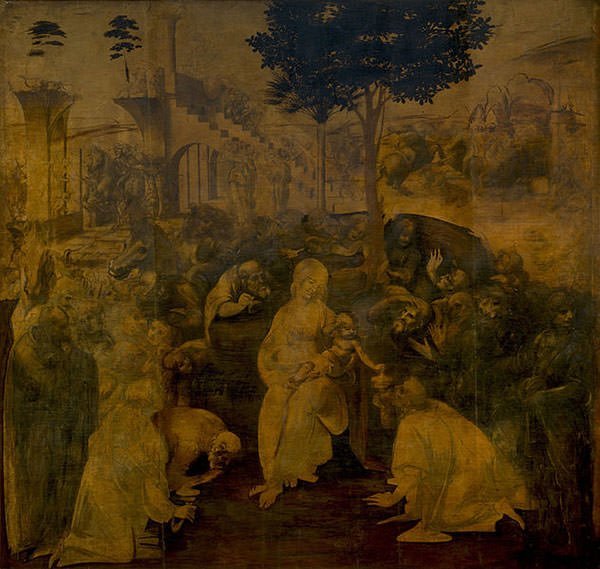
| Location: | Uffizi Gallery, Florence, Italy |
| Year: | 1481 |
This painting was the first prestigious commission of Da Vinci. It was given to him by the Augustinian monks of San Donato. However the painting remained unfinished as Leonardo departed for Milan the following year. The unfinished masterpiece depicts Virgin Mary and child Jesus with the Magi kneeling in adoration, and a group of people surrounding them. In the background a pagan building is apparently being repaired, while on the right, men on horseback are fighting. The complex scene was Leonardo’s first large creation containing many figures and combines several aspects for which he is famous, like daring display of figure composition and personal drama.
#7 Annunciation
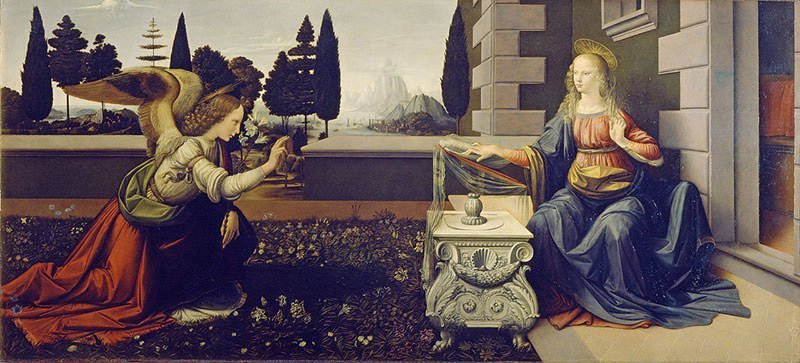
| Location: | Uffizi Gallery, Florence, Italy |
| Year: | 1475 |
This painting depicts Virgin Mary being visited by The Archangel Gabriel who has been sent by God to announce to her that she would miraculously conceive and give birth to Jesus, the Son of God. The subject was very popular for artworks and was depicted numerous times during the Renaissance. Annunciation has been attributed to several artists but recently it has been determined to be a result of collaboration between Da Vinci and his master Andrea del Verrocchio. Famous as Leonardo’s first major painting, some aspects of the artwork are definitely his doing like the composition and the Archangel Gabriel.
#6 St. John the Baptist
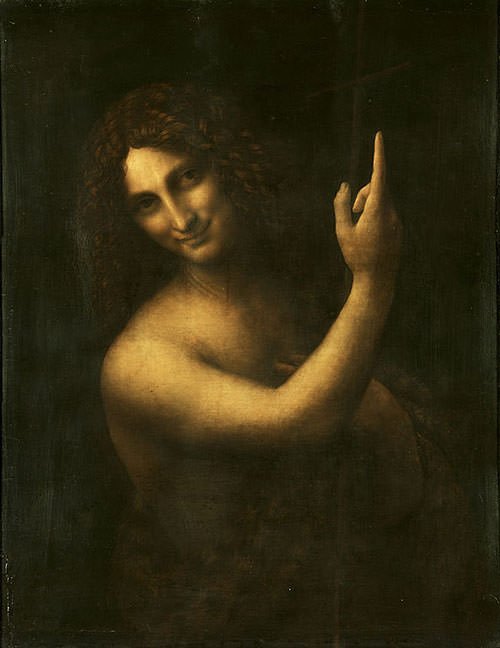
| Location: | Louvre Museum, Paris, France |
| Year: | 1516 |
This piece depicts St. John the Baptist, a major religious figure in Christianity who used baptism as his central sacrament. Prior to this work, St. John had traditionally been portrayed as a lean ascetic and Leonardo’s innovative depiction proved to be influential in later portrayals of the saint, including those by the famous artist Raphael. Sfumato is an artistic technique in which fine shading is used to produce soft, hard to perceive transitions between colors and tones, in order to achieve a more realistic image. Leonardo was a pioneer of the technique and in St. John the Baptist, his sfumato is considered to have reached its highest level. The painting is also well known for the enigmatic smile of St. John, his androgynous appearance, and for being, most probably, the final painting of Da Vinci.
#5 Virgin of the Rocks
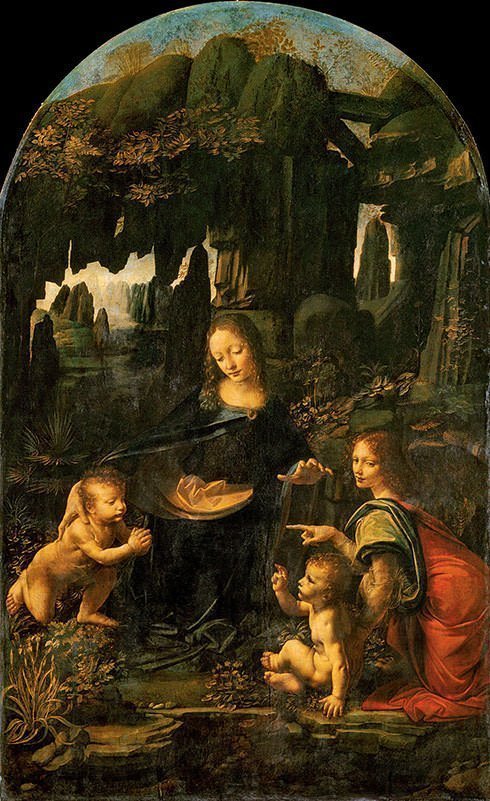
| Location: | Louvre Museum, Paris, France |
| Year: | 1486 |
This is the first and more famed version of two nearly identical paintings by Da Vinci which have been given the same title. It depicts the moment when the infant John the Baptist, escorted by an angel, visits the Madonna and child Jesus returning home from Egypt. In the scene depicted, John recognizes and worships Jesus as the Christ. The painting places the graceful figures in a wild landscape of tumbling rock and whirling water, from which it gets its name. Leonardo brilliantly lays emphasis on the visionary nature of the scene with soft color tones, bathing the figures in the dim light which emerges from the cave and the serenity in expressions. The Virgin of the Rocks reveals Leonardo’s painting at its purest and is considered an idiosyncratic image with no parallel in Christian art.
#4 Lady with an Ermine
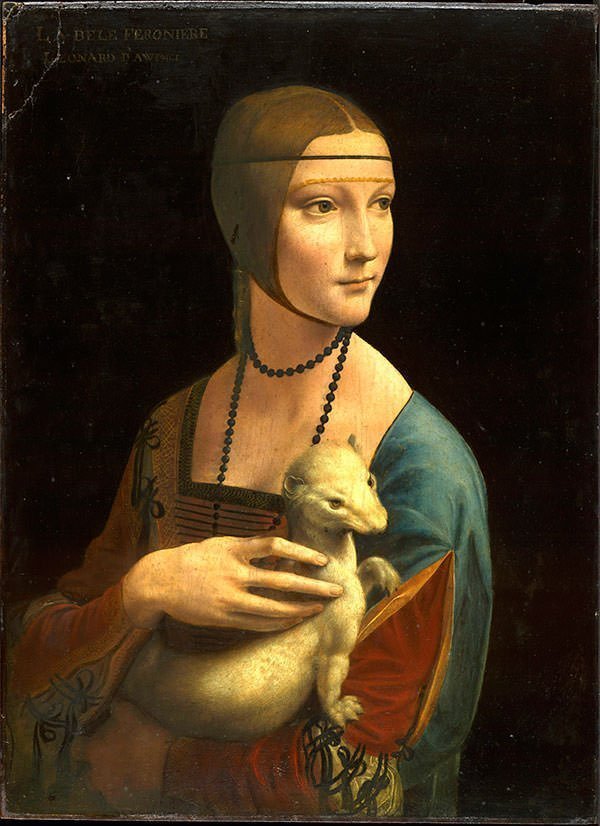
| Location: | Czartoryski Museum, Kraków, Poland |
| Year: | 1490 |
This is one of only four paintings of women by Da Vinci and the most famous after the Mona Lisa. The portrait features Cecilia Gallerani, mistress of his patron Ludovico Sforza, the Duke of Milan. The work is a prime example of Leonardo’s expertise in painting the human form. It can be seen in the outstretched hand of Cecilia. Leonardo pays great attention to each fingernail, each wrinkle around her knuckles and covers even the flexing of the tendon in her bent finger. The most famous aspect of the portrait is the ermine, a term used for a stoat in its white winter coat. The ermine was a traditional symbol of purity and Da Vinci noted that it “prefers to die rather than soil itself”. There are many interpretations of the ermine’s significance including association of purity with the model, Ludovico being a member of the Order of the Ermine and it being a symbol of Cecilia’s pregnancy.
#3 Portrait of a Man in Red Chalk
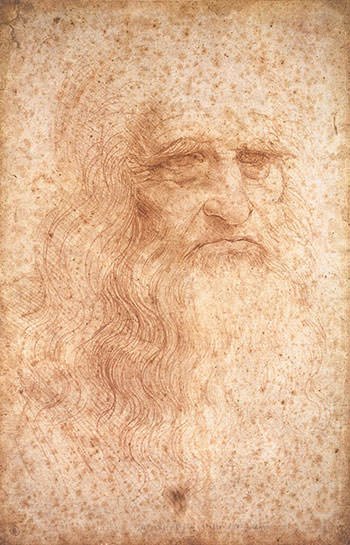
| Location: | Royal Library, Turin, Italy |
| Year: | 1512 |
This is the only surviving self-portrait of Leonardo da Vinci. It shows an old, wise looking man, with long beard and hair, staring at the viewer. Perhaps due to this it has become an iconic representation of Leonardo as a polymath or “Renaissance Man”; and hence has been reproduced innumerable times. It is to be noted that there are a few historians who don’t consider it as a self-portrait primarily because the figure looks much older than Leonardo was at the time (60yrs). However it is widely believed that Da Vinci purposely aged himself. There are several myths associated with Portrait of a Man in Red Chalk, like it transfers great strength to those who observe it. It was secretly moved from Turin to Rome during World War II and some say that this was done to prevent Hitler from acquiring magic powers through the painting.
#2 The Last Supper
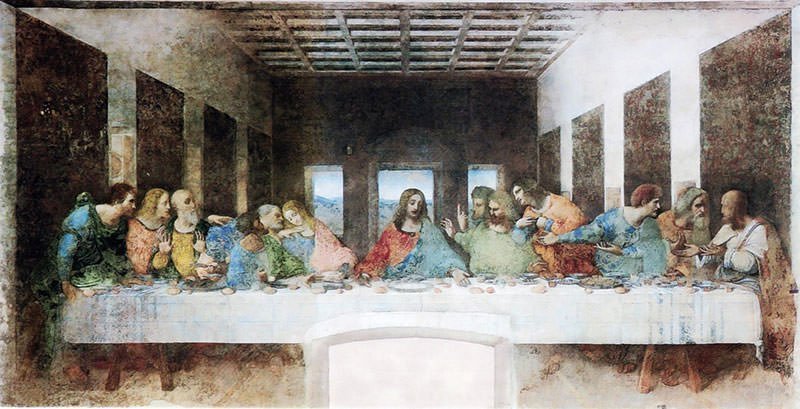
| Location: | Santa Maria delle Grazie, Milan, Italy |
| Year: | 1498 |
This painting represents the scene of The Last Supper of Jesus with his disciples. In it, Leonardo masterfully depicts the bewilderment and confusion that occurs among the disciples of Jesus when he announces that one of them would betray him. Leonardo’s detailed knowledge of anatomy, light, botany and geology; his interest in how humans register emotion in expression and gesture; and his subtle gradation of tone; all come together to make this painting among the most revered and famous works of all time. Some people believe that the person to the right of Jesus in the painting is not John the Apostle, but a woman named Mary Magdalene. This belief plays a central role in Dan Brown’s fiction novel The Da Vinci Code.
#1 Mona Lisa
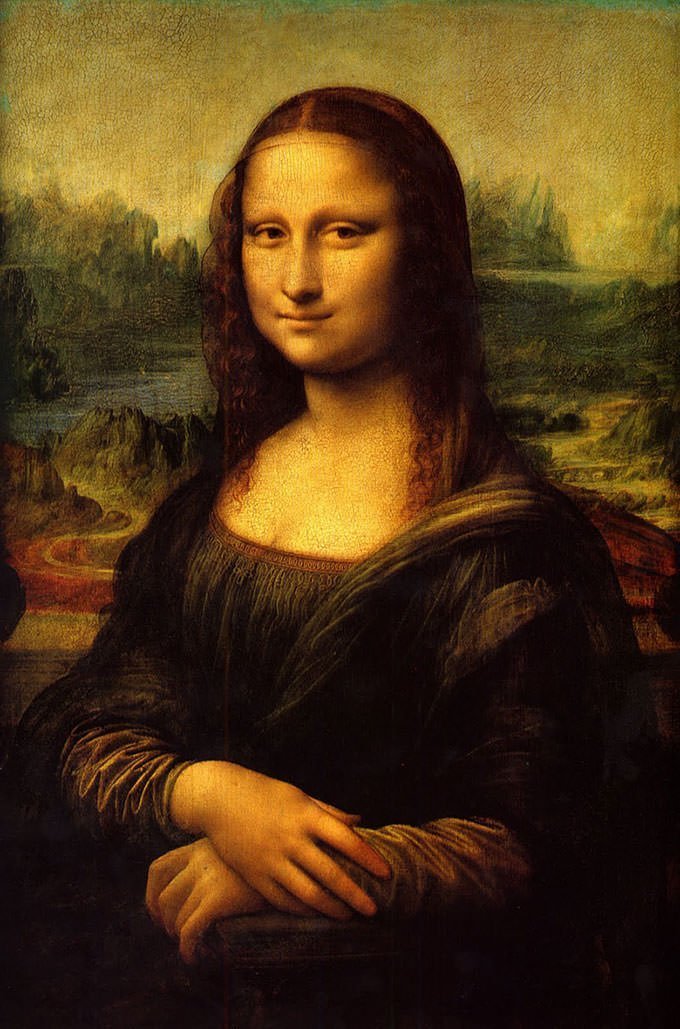
| Location: | Louvre Museum, Paris, France |
| Year: | 1517 |
The Mona Lisa has been acclaimed as “the best known, the most visited, the most written about, the most sung about and the most parodied work of art in the world”. Its fame rests, in particular, on the elusive smile on the woman’s face which is why it is also known as “la Gioconda”, or the laughing one. Based on accounts from an early biographer, the painting is a picture of Lisa Gherardini, the real-life wife of a merchant. For Da Vinci, Mona Lisa was forever a work in progress, as it was his attempt at perfection. The painting was never delivered to its commissioner; he kept it with him till the end of his life. Guinness World Records lists the Mona Lisa as having the highest insurance value for a painting in history. It was assessed at US$100 million on December 14, 1962, which after adjusting inflation, would be around US$759 million today.

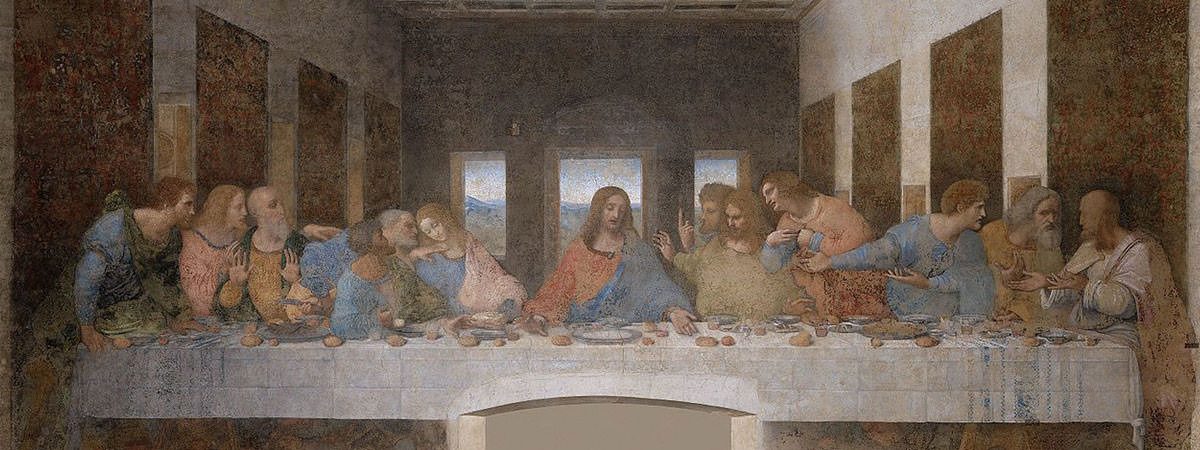
Thank you very much because you gave me a wonderful pictures to do my presentation !!!
You’re welcome.
“Lady with an Ermine” is more beautiful and older than “Mona Lisa”. “Mona Lisa” is probably more famous because this painting is in the Louvre in Paris. “Lady with an Ermine” is in Kraków (Cracow / Cracovie / Cracovia) in Poland.